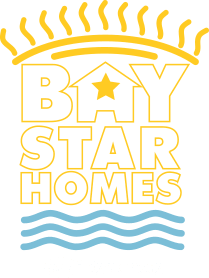Hampton Roads has many beautiful and hearty native plants from which to choose. Just plant them in the right spot and give them room to get established.
GOOD TO KNOW
- Native plants are low maintenance. When planted in the proper spot, they’ll have everything they need. They are adjusted to the climate here in Hampton Roads and won’t need extra lawn chemicals (like fertilizer and pesticides) to thrive.
- Native plants are beneficial to local wildlife, butterflies and pollinators. When development replaces natural areas, animals and insects may find their food sources limited. Monarch caterpillars, for example, eat only the milkweed plant.
- To find native plants you may have to think outside the box. Traditional big box stores frequently stock popular exotic and proprietary hybrid plants. However, local nurseries and plant sales are a great place to find native plants.
- A growing demand for native plants will encourage more retailers to invest in native plants.
GOOD TO DO
Right plant, right place.
The most important step in gardening is planting the right plant in the right place. Evaluate your yard and determine for each zone whether it is full sun, part sun or shade; whether the soil is dry, moist or wet, and whether the dirt is sandy, loamy or clay. You’ll also want to consider how much space you’d like to cover. Space demands will help you narrow down your search to trees, shrubs, or groundcovers.
Choose the native plant that’s right for your yard.
Once you know your yard, simply match it with a coordinating native plant. Here are three comprehensive resources to help you find the perfect native plant to add to your Hampton Roads landscape:
Native Plants for Southeast Virginia Guide
Chesapeake Bay Native Plant Center
Native Plants for Wildlife Habitat and Conservation Landscaping
Look for plants with wildlife benefits.
When you have the option, choose plants that provide food for wildlife. Songbirds, hummingbirds, butterflies, bees and animals are all impacted by declining habitat and rely on native plants for their survival. Examples of common native plants with wildlife benefits include milkweed, coneflower, black-eyed Susan, wax myrtle and beautyberry.
Plant in the spring and fall.
Planting new plants in the spring or fall is best. Cool temperatures give plants an opportunity to establish strong roots before the hot, dry Hampton Roads summers. This is why you’ll find most plant sales happening each spring and fall. Find an upcoming event on the askHRgreen.org event calendar.
Contact an expert.
To learn more about finding and planting native plants, contact your local chapter of the Virginia Native Plant Society or your local Virginia Cooperative Extension office:
- John Clayton Chapter of the Virginia Native Plant Society – Gloucester, James City and York Counties, and the Cities of Williamsburg, Hampton, Newport News and Poquoson
- South Hampton Roads Chapter of the Virginia Native Plant Society – Isle of Wight County, the Cities of Chesapeake, Norfolk, Portsmouth, Suffolk, and Virginia Beach, and the Towns of Smithfield and Zuni
- Virginia Cooperative Extension Local offices

Whether Mowing or Leaf Blowing...
...there's a lot that's good to know about your lawn. Want to test your lawn knowledge?

